Amazing zone Indonesia trip
10 Best Places to Visit in Indonesia
Indonesia is both a leisure seeker’s dream and an adventurer’s playground. Whether you’re looking to bronze on beautiful beaches, hike in search of endangered orangutan, or snorkel amongst some of the most beautiful coral reefs on Earth, Indonesia has something for everyone.
Explore the last Indonesian city still ruled by an ancient monarchy, follow in the literal footsteps of rare Komodo dragons, and soak in steamy hot springs surrounded by nothing but wild, raw jungle. If you’re looking for magic hidden in the everyday, you’ve found it. Here’s a look at the best places to visit in Indonesia.
10. Raja Ampat Islands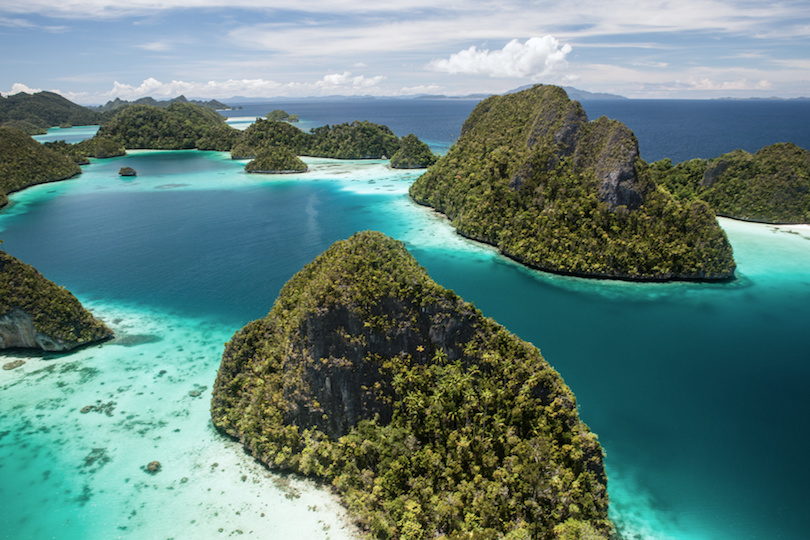
An island cluster on the northwestern tip of Papua New Guinea, Raja Ampat is one of the most sensational diving destinations in Indonesia. Raja Ampat – which means ‘Four Kings’ – is made up of four major jungle-clad islands surrounded by turquoise lagoons and pearly-white palm-fringed beaches – Waigeo, Salawati, Misool, and Batanta – along with thousands of smaller islands.
The archipelago is celebrated for its rich marine life and underwater coral reefs – home to as many as 75% of all known coral species! With everything from underwater photography to wreck diving, it’s so beautiful, you should definitely invest in an underwater camera.
But the fun isn’t limited to offshore. The islands are also a fantastic bird-watching destination. Pack your binoculars and keep your eyes peeled for eagles swooping overhead and birds of paradise such as the Wilson’s and Cendrawash chirping in the treetops while you trek to waterfalls and mysterious age-old caves.
9. Tanjung Puting National Park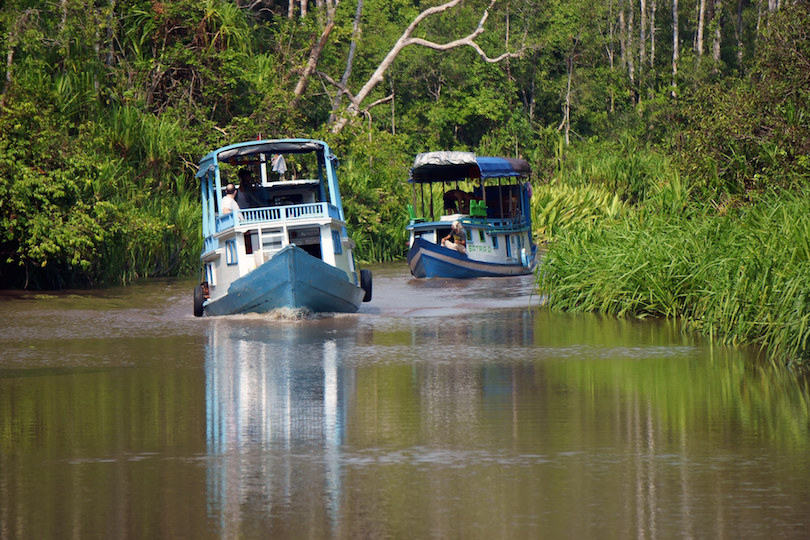
Tanjung Puting National Park is one of the world’s natural wonders celebrated for its endangered orangutans – some of the last of these orange, long-haired primates on Earth.
Located in the jungles of Borneo – the third-largest island in the world that’s part of Indonesia, Malaysia and the sultanate of Brunei – the park is home to a variety of wild lowland habitats on a peninsula overlooking the Java Sea. Habitats range from swamp forests to alluvial plains and ocean coastline that provides a home to a diverse array of wildlife – so diverse that it was declared a game reserve before being deemed a national park in 1982.
While orangutans are the obvious draw, you’ll also be able to spot the odd-nosed proboscis monkey, the vulnerable clouded leopard, and over 200 species of birds in the park. Couple these rare animal sightings with fresh jungle air and no light pollution making for excellent star gazing, and the park makes for the perfect adventure. Explore on foot or by klotok boat with a knowledgeable guide – it’s up to you.
8. Flores Island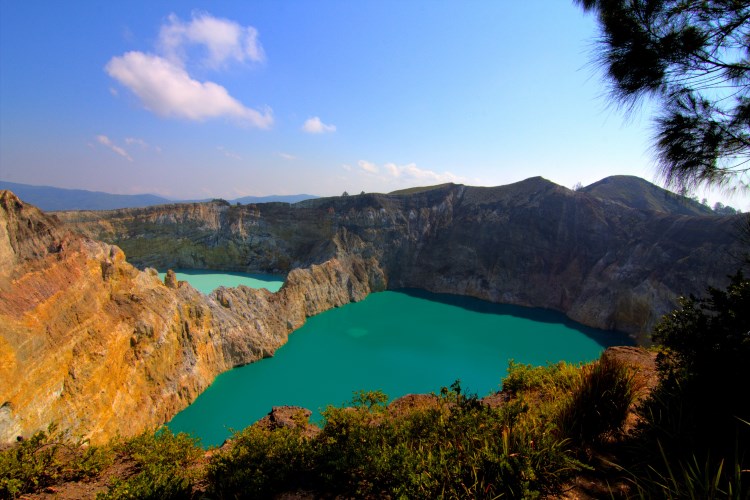
The Indonesian island of Flores means ‘Flowers’ in Portuguese, a name that hails from the European missionaries who arrived in the 16th-century. Lying to the east of Sumbawa and to the west of Lembata in Nusa Tenggara, the long island of Flores is famous for its amazing multi-colored crater lakes around Mount Kelimutu, traditional village homestays, and endless opportunities for adventure tourism.
The lakes are truly a sight to behold in every color you can think of – from browns and greens to aqua blue; colors caused by the minerals reacting to the gas of the region’s volcanoes. The Kelimutu three-colored lake is a must-see from the top of the volcano at sunrise.
For those in search of more physical activity, Egon volcano can be reached with a self-guided or guided hike. The north coast has many offshore islands and coral reefs to explore with an exhilarating dive or snorkel. Or you can simply relax and soak your tired muscles in the enchanting hot springs hidden within the jungle – bliss!
7. Torajaland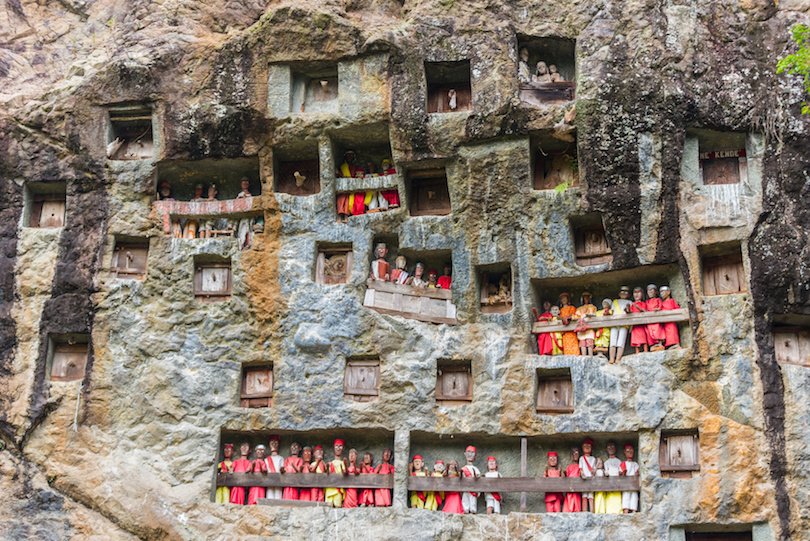
Nicknamed ‘the Land of the Heavenly Kings,’ Torajaland (Tana Toraja) is tucked within the lush central highlands of Indonesia’s Southern Sulawesi, a region that’s dotted with rice fields, limestone peaks, and bamboo-clad hills. Home to the Toraja, a Christian and animist people, Tana Toraja has a fascinating culture that’s remained largely and surprisingly independent from western influence.
Torajans are famous for their massive peaked-roof houses known as tongkonan and spectacular but gruesome funeral rites. After a person’s death, the body is kept – often for several years – until the actual funeral ceremony, which can last for several days. The deceased is then finally buried in a small cave or in a hollow tree. The biggest funerals are usually held in the dry-season months of July and August, but there are funerals year-round.
Exploring Tana Toraja with a local guide is expensive but worth it. They’ll give you a sneaky glimpse into these interesting customs and some of the lesser-known burial sites and village compounds known for their colorful exteriors and boat-shaped rooftops. Visit by yourself, and you’ll still be able to see some of the more famous sites on a trekking trip, but you’ll lack the local insight and insider tips that these tours afford.
6. Bukit Lawang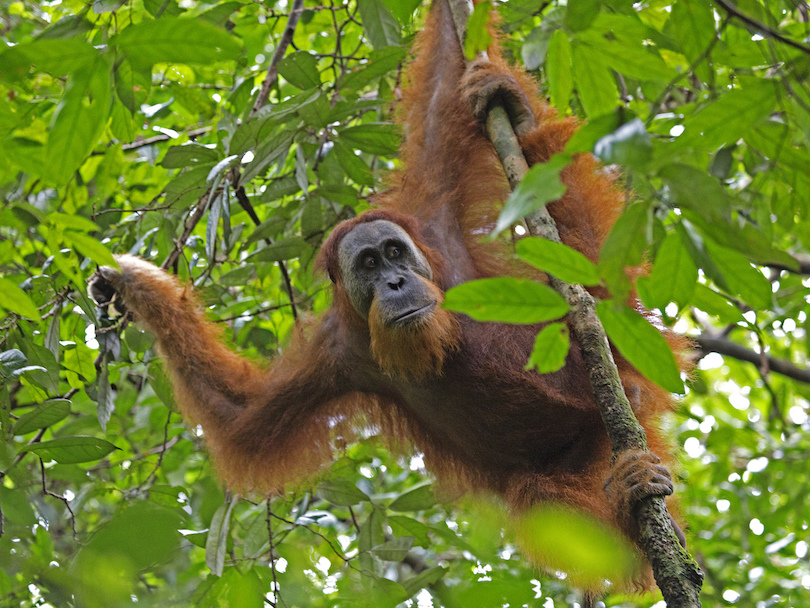
Bukit Lawang is a small village situated at the eastern side of Gunung Leuser National Park about 90 kilometers northwest of Medan, the capital city of North Sumatra. A rehabilitation center for orangutans was founded here in 1973. The main purpose is to preserve the decreasing number of orangutan population due to hunting and deforestation.
The ecotourism here provides jobs and an income for local families living in the village and is a worthy charity to support, if not for the animals alone. The chance to see orangutans in the wild is the major drawcard, but the village is also a worthy stop. It’s built in a sustainable way that takes the surrounding environment into consideration.
Bukit Lawang is a popular destination for guided jungle trekking, acting as the gateway to the Gunung Leuser National Park. Here, you can spot Thomas Leaf Monkeys with their unusual haircuts, walk in the footprints of tigers and elephants, and explore on foot with local bird and nature walks.
5. Bromo Tengger Semeru National Park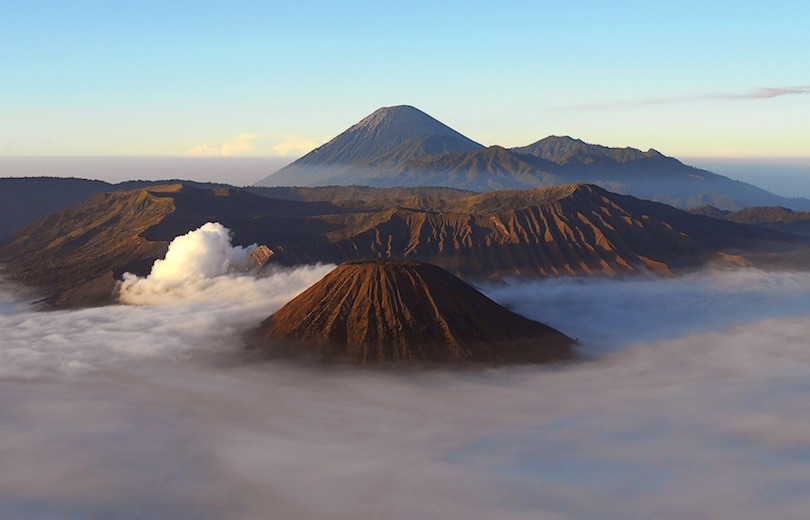
Tucked within East Java, Bromo Tengger Semeru National Park is an ethereal yet barren wonderland of volcanic calderas seemingly continuously surrounded by smoke and clouds. The park gets its name from the merging of the Hindu Tengger people and the two mountains found in the park – Mount Bromo and Mount Semeru. The latter is the highest mountain in the Java region, and one of the most active volcanoes in Indonesia.
The draw here is less about wildlife and more about the scenery, yet there are still some interesting animals to be seen, such as Java rusa deer, marbled cats, wild pigs, and the occasional leopard. The best part about a visit to this park is the chance to climb a volcano at sunrise for some of the most exceptional views across this otherworldly landscape.
For those who wish to climb this still-active volcano, a permit from the national park authority is required, and you’ll only be allowed to ascend when the mountain isn’t erupting. Mount Bromo is another prominent landmark in the park, characterized by its often-billowing collapsed crater peeking out above the lush lowland valleys.
4. Lombok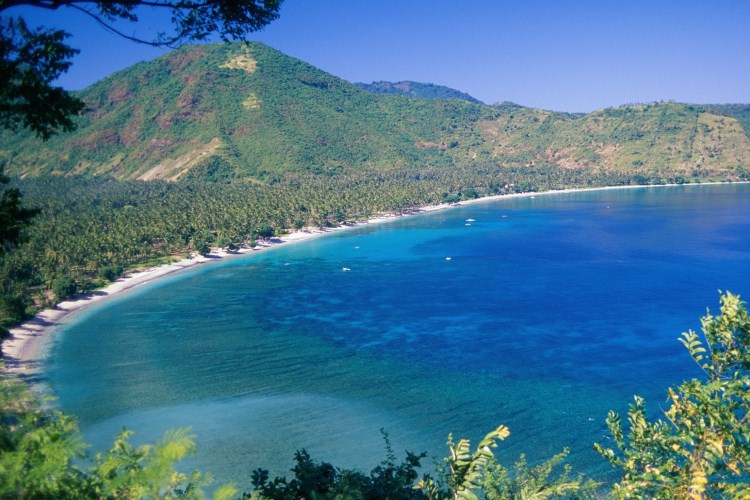
An increasingly popular alternative to overly commercial Bali, Lombok and its offshore coral-ringed Gili Islands are tropical paradises. Here, you can enjoy all the appeal of Bali before tourism took over – surfing hotspots, uncrowded beaches, and magical waterfalls tucked within steamy jungles, of which Tiu Kelep Waterfall tops the list without question.
Backpackers head to Lombok in search of adventure. This is likely because its volcano-topped jungle provides for a great trek surrounded by unforgettable scenery. If you’re planning on hiking the Gunung Rinjani volcano and its photogenic crater lake, make sure you’re fit and have booked with a reputable guide – it’s by no means a walk in the park!
There’s also a fantastic nightlife scene when the sun goes down on the satellite islands of Gili, particularly Gili Trawangan. Those in search of culture won’t be disappointed either – the markets in Mataram are a vibrant place to pick up souvenirs while mingling with the locals.
3. Komodo National Park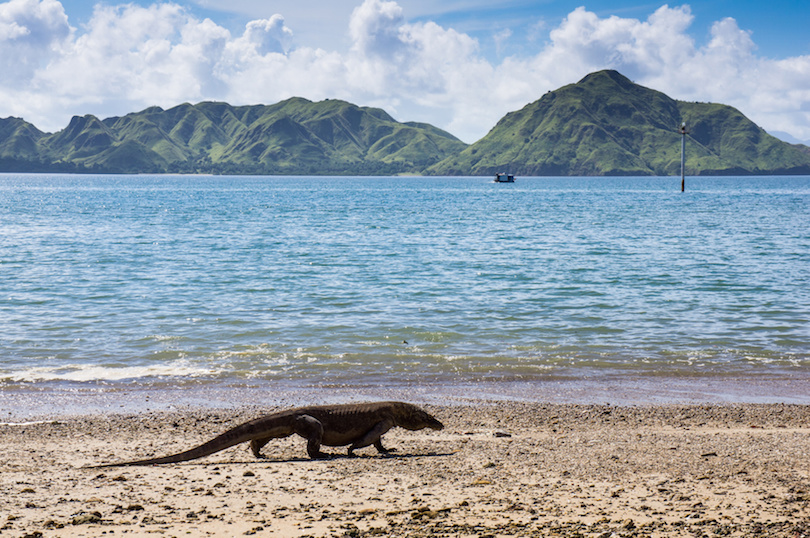
Located in Indonesia’s Nusa Tenggara region, Komodo National Park is famous for one thing and one thing only – its reptilian namesake, the Komodo dragon. Spread across three main islands – Komodo, Rinca, and Padar – as well as a collection of smaller islets, the park provides a sanctuary for this strange looking creature reminiscent of the dinosaurs. It’s the largest living lizard on the planet and can reach a mighty three meters in length! The reptiles roam freely over the islands, and visitors rely on experienced tour guides for sightings and to keep them safe.
Today, the park has expanded to include the conservation of the entire ecosystem both on land and in the ocean. There are several endemic species, such as Rinca rats and fruit bats, as well as wild horses, long-tailed macaques, water buffalo, and several species of dangerous snakes.
But while the terrestrial beings within the Komodo National Park are definitely worth seeing, it’s the marine life that really stands out. The park protects some of the most abundant marine landscapes in the world, part of the Coral Triangle, home to more than 250 species of coral and a plethora of sea sponges and unusual bony fish.
2. Yogyakarta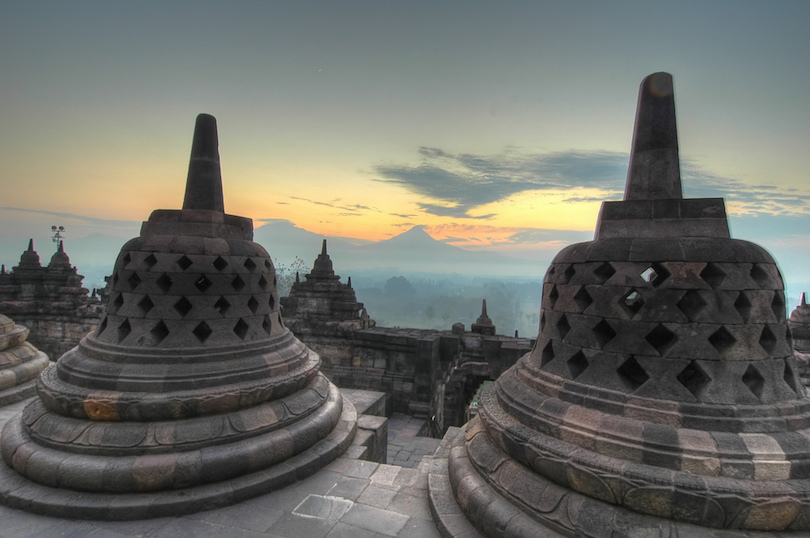
Yogyakarta is a bustling town of some 500,000 people and the most popular tourist destination on Java, due to its proximity to the famous temples of Borobudur and Prambanan. The city itself is a center of education and culture, particularly for Javanese fine arts – from theater to ballet performances, and has a wide range of tourist facilities. It is also the last Indonesian city still ruled by a monarchy.
Yogyakarta lies in one of the most seismically active parts of Java and has thus repeatedly been struck by earthquakes and volcano eruptions. In 2006 an earthquake flattened over 300,000 houses while in 2010 the nearby volcano of Mount Merapi erupted, spewing lava over nearby villages.
Apart from nearby Buddhist and Hindu temples, and the sights in the city itself – small enough that it can be explored on foot – Yogyakarta is also a great base for exploring the surrounding villages locked in time by hardened lava on a Merapi Lava Tour, an activity that’s both sobering and captivating.
1. Bali

One of the most visited and dreamed-of destinations on the modern traveler bucket list, Bali is a kaleidoscope of beautiful beaches, volcanic hills, lush rice paddies, and thousands upon thousands of Indonesian temples. It’s celebrated for its laidback atmosphere that’s attracted backpackers, surfers, and yogis for years, who have come in search of finding their Zen in this tropical paradise.
Nicknamed the ‘Island of the Gods,’ Bali is deeply rooted in the spiritual, with endless Hindu temples boasting colorful architecture all of their own – particularly in Ubud, Bali’s spiritual capital. Yet all of Bali’s wonders have not gone unnoticed, and the island can get uncomfortably packed during the tourist season around August. If possible, school holidays are best avoided too.
Spend your days relaxing on some of Bali’s best beaches and diving in the Coral Triangle with its endless array of magical marine life. But the best part about Bali is just as much about doing a little as a lot. Read your book in a hammock, watch the sun go down, and feel the island’s slow, laidback vibe step up the pace at one of the many animated beachfront bars.
Comments
Post a Comment